Nguan was born and raised in Singapore. His photographs contemplate life as it unfolds in big cities today. He attended Northwestern University in Illinois and graduated with a degree in Film and Video Production. Nguan’s work has been featured in publications such as Arkitip, It’s Nice That and the Vice Photo Issue. His first photo book, Shibuya, was named in PDN Annual as one of the best of 2010. His second book, How Loneliness Goes, is available now.
![]() SINGAPORE (2011-2013)
Singapore is a portrait of living and longing in the city. The tender and lyrical tone used in the series is intended to mask themes of discombobulation and disconnection. Each picture is meant to seem simultaneously naïve and disquieting, so as to reflect the predicament of an adolescent nation torn between her future and the past.
SINGAPORE (2011-2013)
Singapore is a portrait of living and longing in the city. The tender and lyrical tone used in the series is intended to mask themes of discombobulation and disconnection. Each picture is meant to seem simultaneously naïve and disquieting, so as to reflect the predicament of an adolescent nation torn between her future and the past.
![]()
![]()
![]()
![]()
![]()
![]()
![]()
![]()
![]() For more information and the complete series, please visit his website.
For more information and the complete series, please visit his website.
 SINGAPORE (2011-2013)
Singapore is a portrait of living and longing in the city. The tender and lyrical tone used in the series is intended to mask themes of discombobulation and disconnection. Each picture is meant to seem simultaneously naïve and disquieting, so as to reflect the predicament of an adolescent nation torn between her future and the past.
SINGAPORE (2011-2013)
Singapore is a portrait of living and longing in the city. The tender and lyrical tone used in the series is intended to mask themes of discombobulation and disconnection. Each picture is meant to seem simultaneously naïve and disquieting, so as to reflect the predicament of an adolescent nation torn between her future and the past.








 For more information and the complete series, please visit his website.
For more information and the complete series, please visit his website.
 SKELETONS IN THE CLOSET
Skeletons in the Closet (2009-2012) is a photo series focusing on the backstage areas of the Natural History Museum Vienna. The book features a selection of photographs from the non-public parts of the museum, including storage rooms, basements and depots. The non-staged photographs of the series highlight the random interactions between the stored exhibits amongst each other or the surrounding spaces. Skeletons in the Closet is a collection of sometimes absurd sceneries and strange still lives, accompanied by written reflections on the bloody past of natural history museums.
SKELETONS IN THE CLOSET
Skeletons in the Closet (2009-2012) is a photo series focusing on the backstage areas of the Natural History Museum Vienna. The book features a selection of photographs from the non-public parts of the museum, including storage rooms, basements and depots. The non-staged photographs of the series highlight the random interactions between the stored exhibits amongst each other or the surrounding spaces. Skeletons in the Closet is a collection of sometimes absurd sceneries and strange still lives, accompanied by written reflections on the bloody past of natural history museums.












 BOOK 'SKELETONS IN THE CLOSET', 2013
112 pages, 63 images, 21x21cm, hardbound, limited to 750 hand numbered
copies. Pictures by Klaus Pichler, Texts by Julia Edthofer, Herbert
Justnik and Klaus Pichler
€ 30,-/$ 40,- plus P&P
LIMITED EDITION, limited to 50 copies, signed and numbered
Book 'Skeletons in the Closet'
Print 'Monkey, Badger, Mirror', 20x25cm (printed on Hahnemühle Fine Art
Ultra Smooth Photo Rag, signed and numbered)
Fossil Shark Tooth in Display
Delivered in a customized cardboard box
€ 100,-/ $ 135,- plus P&P
For more information, continue on his website.
Buy your copy here.
BOOK 'SKELETONS IN THE CLOSET', 2013
112 pages, 63 images, 21x21cm, hardbound, limited to 750 hand numbered
copies. Pictures by Klaus Pichler, Texts by Julia Edthofer, Herbert
Justnik and Klaus Pichler
€ 30,-/$ 40,- plus P&P
LIMITED EDITION, limited to 50 copies, signed and numbered
Book 'Skeletons in the Closet'
Print 'Monkey, Badger, Mirror', 20x25cm (printed on Hahnemühle Fine Art
Ultra Smooth Photo Rag, signed and numbered)
Fossil Shark Tooth in Display
Delivered in a customized cardboard box
€ 100,-/ $ 135,- plus P&P
For more information, continue on his website.
Buy your copy here.
 Victor in his room, 2011
Victor in his room, 2011 Descent, 2012
Coming, Going and Staying
The land we call home is as much a container for our identity as our own bodies. It is also just as malleable, and fraught with contradictions. Despite the turbulent nature of the borderlands, many towns within it maintain a strong sense of community. Ajo, Arizona was transformed into an outpost for the border conflict, staged in the hundreds of miles of surrounding uninhabited desert. Despite this activity, Ajo does not see itself as a border town. The more time I spend there, the more I am struck by its nebulous form. It is defined by the people who live there, and each of them define it differently. One resident wrote a play about the town, in which two aliens posing as anthropologists traveled there during varied periods of time. With every trip they found a different group of people; Spanish conquistadors, industrialists, the Tohono O’odham and border patrol, reinventing this one little patch of out-of-the-way desert for themselves.
As an artist I too redefine this place. I weave portraits and landscapes together that are a mixture of staged and found scenes. The result is a place of my own invention—steeped in the reality of this unique region. I believe this process of reinvention mirrors that of the community and is similar to the way we all think of our hometowns—based in part in the reality of the landscape and in part on our memories, prejudices and desires.
Descent, 2012
Coming, Going and Staying
The land we call home is as much a container for our identity as our own bodies. It is also just as malleable, and fraught with contradictions. Despite the turbulent nature of the borderlands, many towns within it maintain a strong sense of community. Ajo, Arizona was transformed into an outpost for the border conflict, staged in the hundreds of miles of surrounding uninhabited desert. Despite this activity, Ajo does not see itself as a border town. The more time I spend there, the more I am struck by its nebulous form. It is defined by the people who live there, and each of them define it differently. One resident wrote a play about the town, in which two aliens posing as anthropologists traveled there during varied periods of time. With every trip they found a different group of people; Spanish conquistadors, industrialists, the Tohono O’odham and border patrol, reinventing this one little patch of out-of-the-way desert for themselves.
As an artist I too redefine this place. I weave portraits and landscapes together that are a mixture of staged and found scenes. The result is a place of my own invention—steeped in the reality of this unique region. I believe this process of reinvention mirrors that of the community and is similar to the way we all think of our hometowns—based in part in the reality of the landscape and in part on our memories, prejudices and desires.
 Angel who might move, 2012
Angel who might move, 2012 Old fire, 2013
Old fire, 2013 Migrant, 2011
Migrant, 2011 Spring break at Pizza Hut, 2011
Spring break at Pizza Hut, 2011 Monument, 2010
Monument, 2010 Klayla, twin of Terri, 2011
Klayla, twin of Terri, 2011 Casey at the Chu Chu Club, 2012
Casey at the Chu Chu Club, 2012 July, 2012
July, 2012 Have you believed? 2013
Have you believed? 2013 Cheapest hotel before Mexico, 2012
Cheapest hotel before Mexico, 2012 Exodus, 2012
Exodus, 2012 Town of horses, 2012
To view more of Lara's work please visit her website.
Town of horses, 2012
To view more of Lara's work please visit her website.
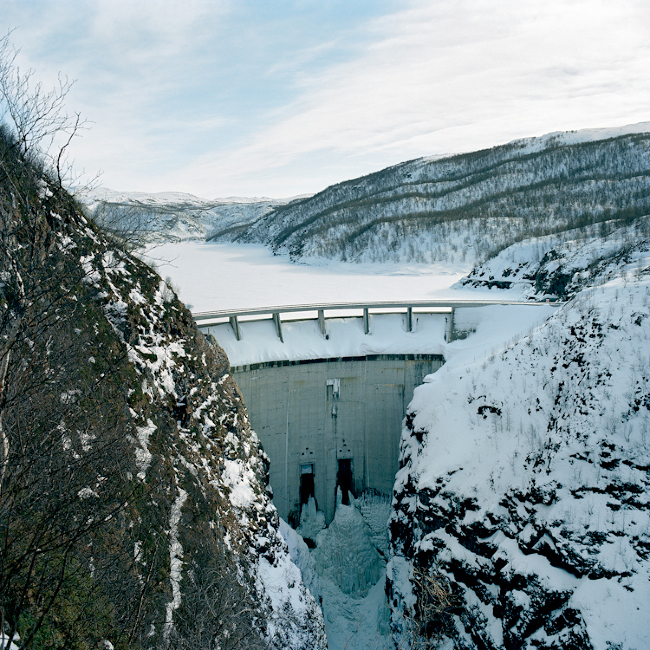 Since 2005 I have been traveling regularly to Máze, a small Sámi village located at the highest point of the European map, far above the Arctic Circle, in Norwegian Lapland. There, I met quiet people, sometimes melancholic, captivating, who are very proud of their village and territory. They often have binoculars at hand, even in their homes, to gaze at these beautiful landscapes. I have photographed Sámi people, houses, land and reindeer that were almost not here today. They barely escaped being flooded by the waters of a hydroelectric dam project that the Norwegian government planned in the early 1970’s and thanks to Sámi people’s protests and resistance was fortunately aborted. But I have also photographed a reality that will undoubtedly transform in the coming century, due to global warming and cultural integration. To me, Máze is an ambivalent symbol of resistance and helplessness. Pride as well as suspicion, solitude and great beauty prevail there. In the most beautiful tundra of the Arctic region, I tasted Ante’s and Ole Ailo’s favorite season, when days get longer and temperatures become milder. The perfect moment, when time doesn’t exist anymore and night is gone, when they immerse themselves in their favorite activities: fishing through ice holes in Lake Suolojávri and riding the snøskuter in the tundra. And all these hours spent with friends, family, outside on a reindeer skin, in a hytte* or under a lávvu*, talking, joiking*, or lying down doing nothing, saying nothing. Just being.
Since 2005 I have been traveling regularly to Máze, a small Sámi village located at the highest point of the European map, far above the Arctic Circle, in Norwegian Lapland. There, I met quiet people, sometimes melancholic, captivating, who are very proud of their village and territory. They often have binoculars at hand, even in their homes, to gaze at these beautiful landscapes. I have photographed Sámi people, houses, land and reindeer that were almost not here today. They barely escaped being flooded by the waters of a hydroelectric dam project that the Norwegian government planned in the early 1970’s and thanks to Sámi people’s protests and resistance was fortunately aborted. But I have also photographed a reality that will undoubtedly transform in the coming century, due to global warming and cultural integration. To me, Máze is an ambivalent symbol of resistance and helplessness. Pride as well as suspicion, solitude and great beauty prevail there. In the most beautiful tundra of the Arctic region, I tasted Ante’s and Ole Ailo’s favorite season, when days get longer and temperatures become milder. The perfect moment, when time doesn’t exist anymore and night is gone, when they immerse themselves in their favorite activities: fishing through ice holes in Lake Suolojávri and riding the snøskuter in the tundra. And all these hours spent with friends, family, outside on a reindeer skin, in a hytte* or under a lávvu*, talking, joiking*, or lying down doing nothing, saying nothing. Just being.
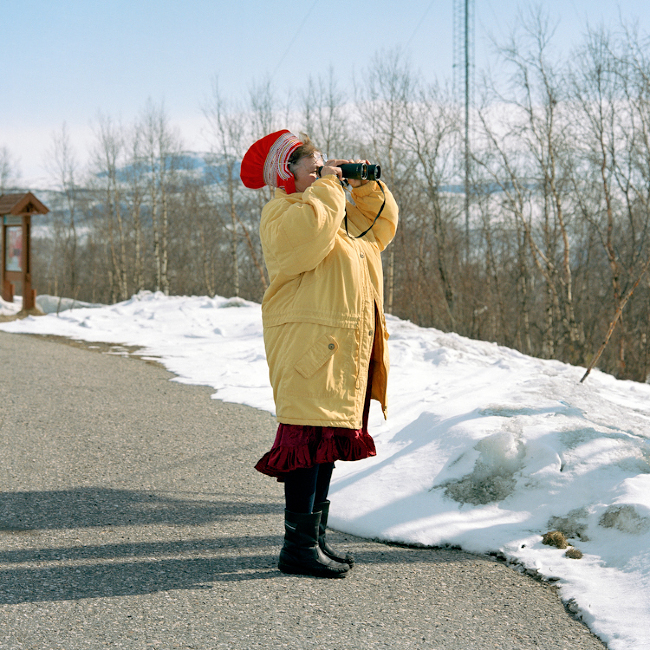

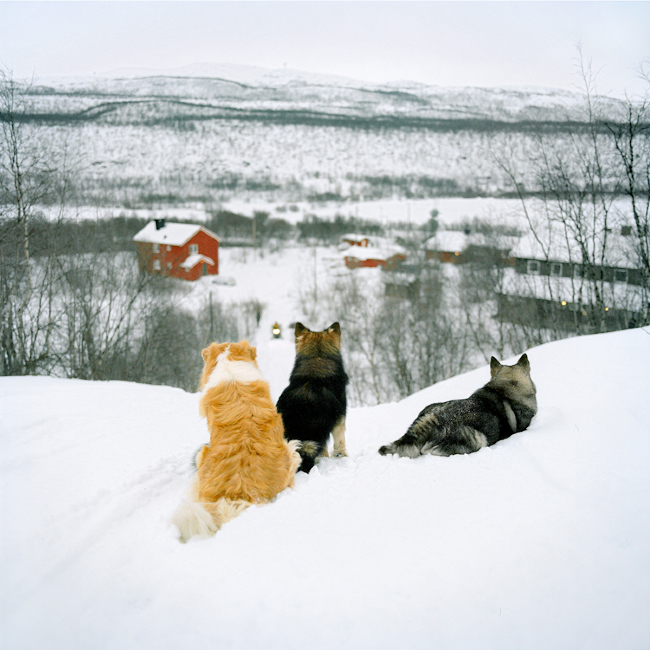
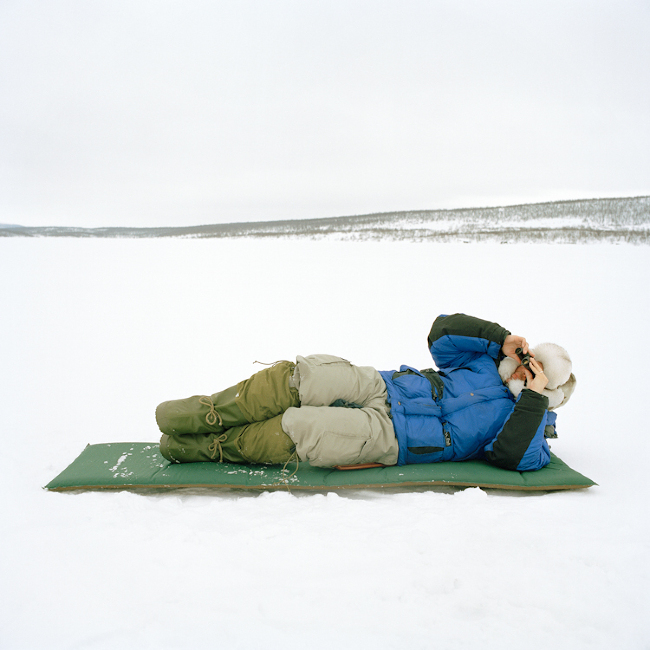
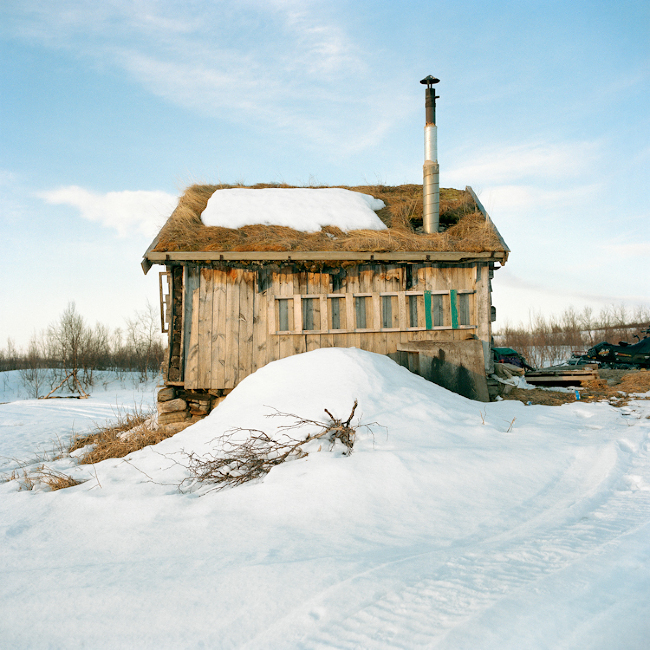
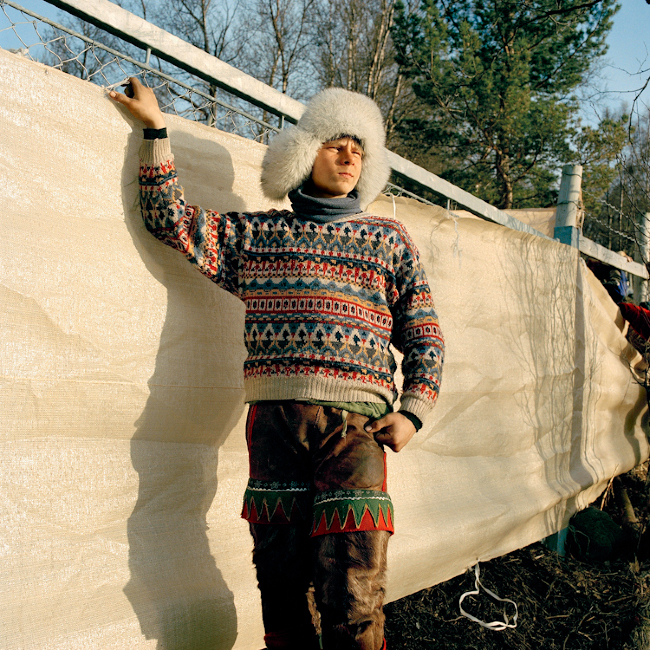
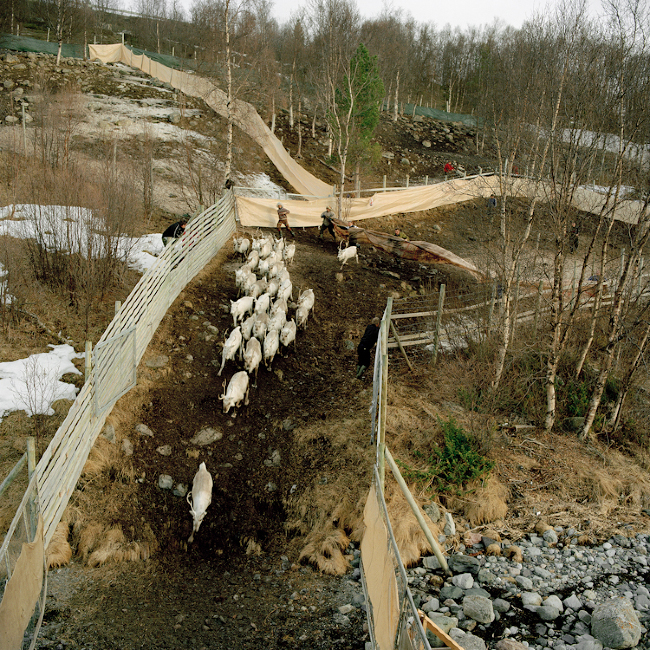
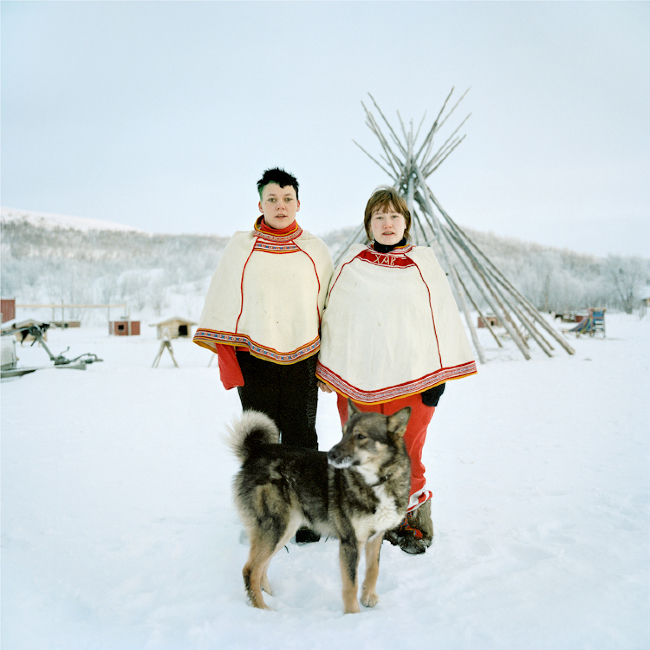
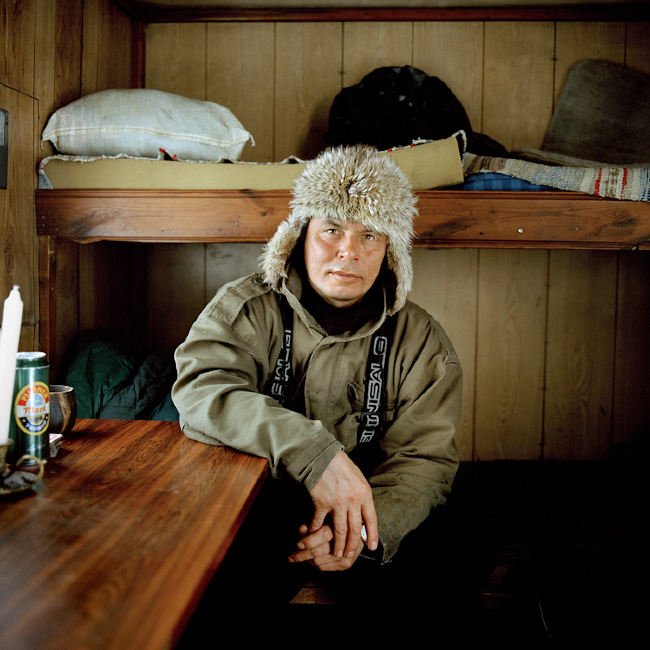
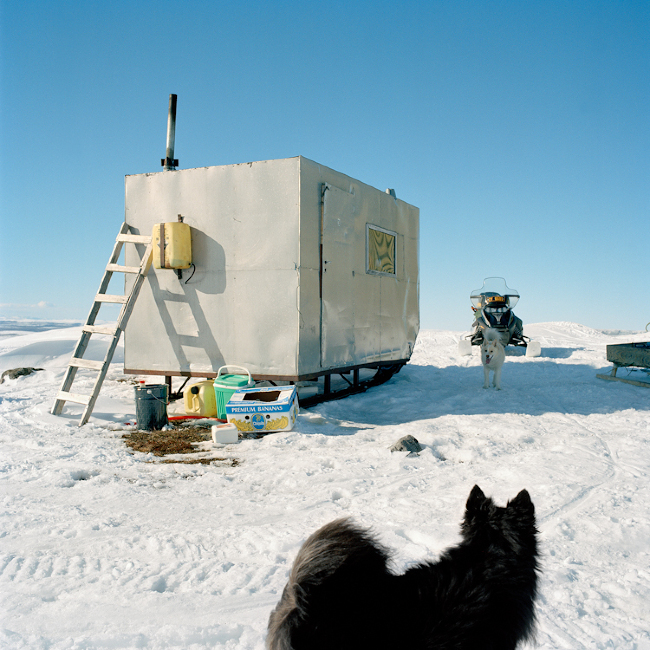
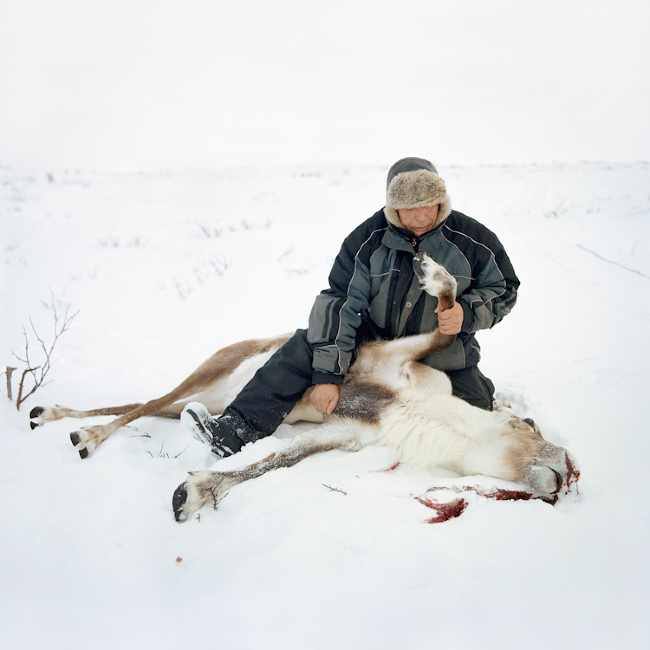
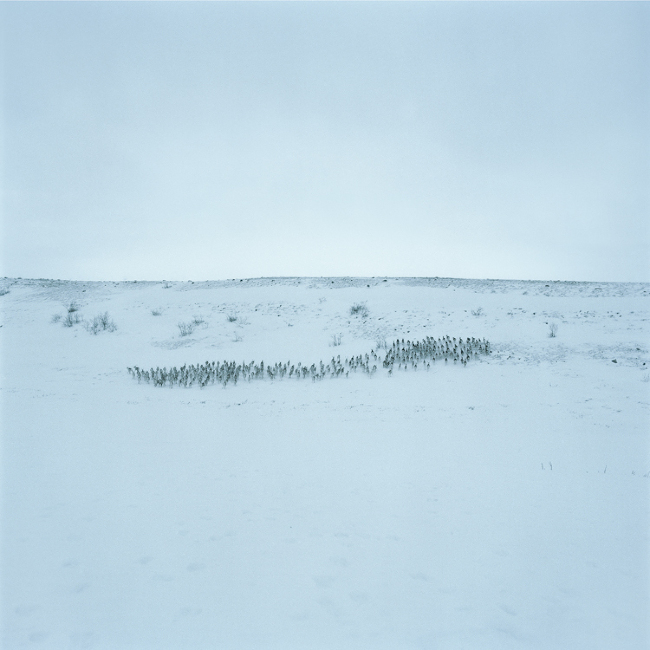
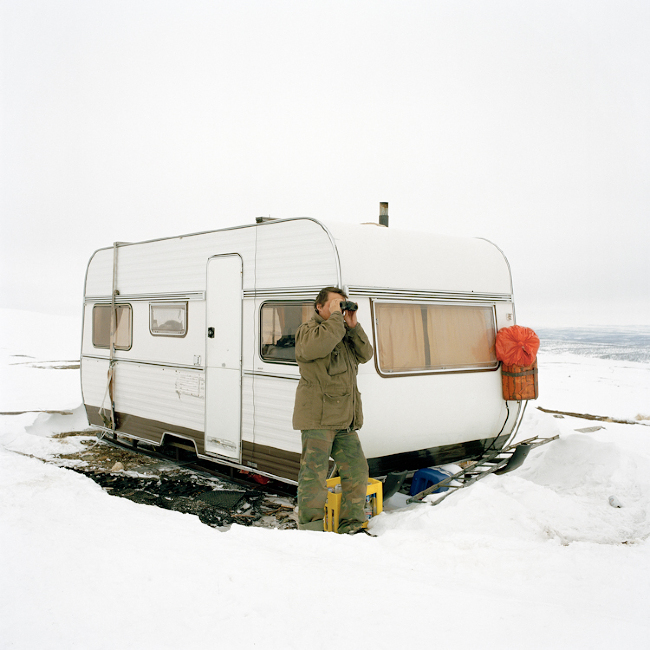

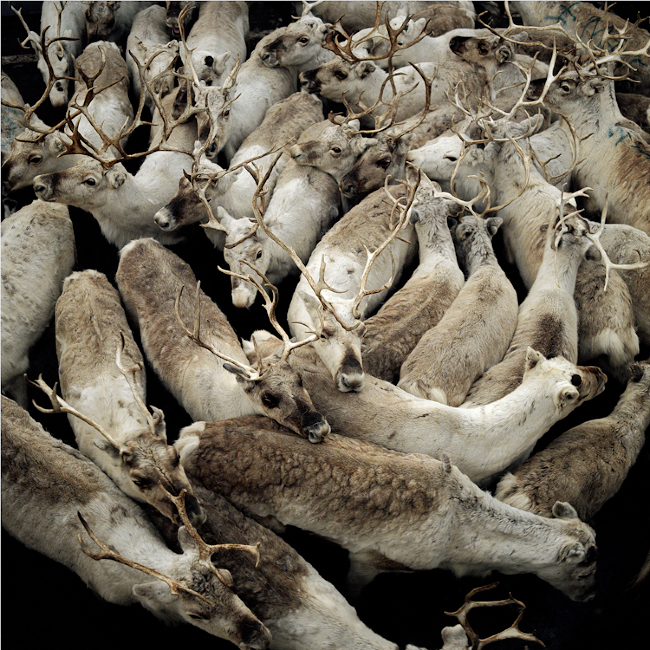
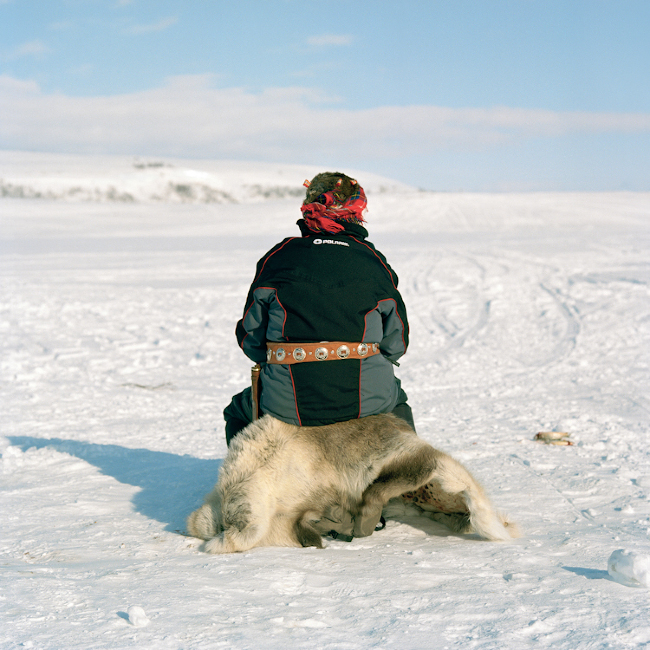
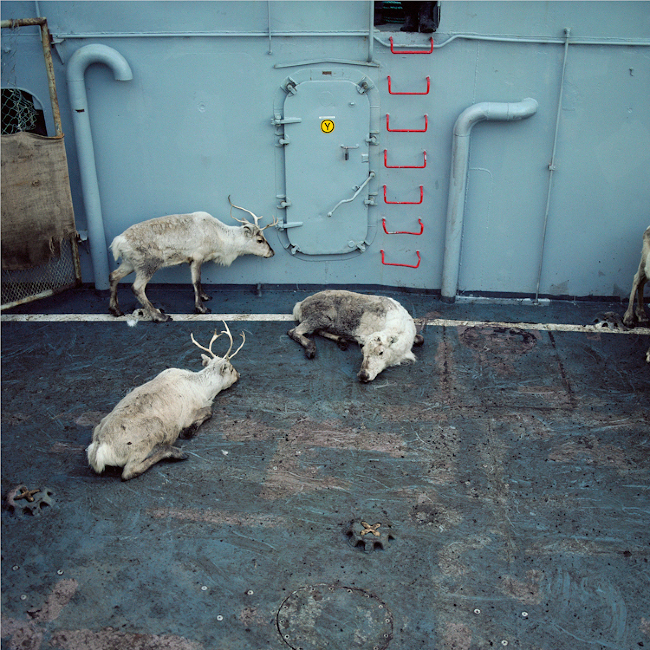
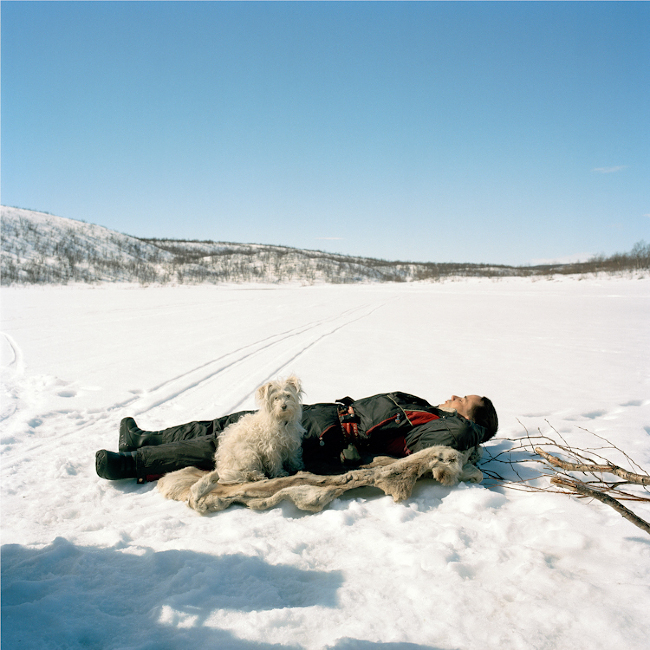
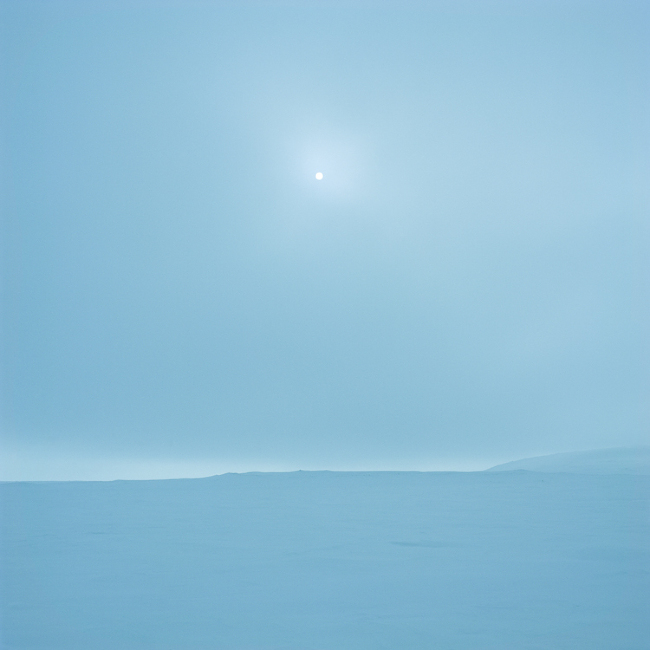 Order your copy of issue 6.
To view more of Céline's work please visit her website.
Order your copy of issue 6.
To view more of Céline's work please visit her website.
 I have a compulsion to find order in chaos; to seek out the concealed markers and forgotten shrines that exist on the peripheries of our culture. The camera is a portal to infinite interpretations of the environment in which we find ourselves. The familiar becomes alien, and the new reeks of old memories—those birthed from our own lives, and those from the lives of people we will never know.
My current work brings me to places that, for one reason or another, have become geographical outcasts. These scraps of land are often hidden in plain view and are rife with artifacts and submerged histories of their own. Photography allows me to gather these shards of cultural debris and weave them into a new narrative constructed of diverse environments with varying relationships to reality.
I have a compulsion to find order in chaos; to seek out the concealed markers and forgotten shrines that exist on the peripheries of our culture. The camera is a portal to infinite interpretations of the environment in which we find ourselves. The familiar becomes alien, and the new reeks of old memories—those birthed from our own lives, and those from the lives of people we will never know.
My current work brings me to places that, for one reason or another, have become geographical outcasts. These scraps of land are often hidden in plain view and are rife with artifacts and submerged histories of their own. Photography allows me to gather these shards of cultural debris and weave them into a new narrative constructed of diverse environments with varying relationships to reality.

 Though I do not consider myself a religious person, I am interested in how geometry, and basic forms in the landscape can elicit a primitive sense of divine power. I enjoy playing with the concept of sacred objects and consecrated land, as the locations I find myself photographing in are typically anything but. It is the rational lens of the camera that allows me to collect the ‘raw material’ from my surroundings and organize it in a way that suggests a greater truth.
Though I do not consider myself a religious person, I am interested in how geometry, and basic forms in the landscape can elicit a primitive sense of divine power. I enjoy playing with the concept of sacred objects and consecrated land, as the locations I find myself photographing in are typically anything but. It is the rational lens of the camera that allows me to collect the ‘raw material’ from my surroundings and organize it in a way that suggests a greater truth.











 For more work, please visit his website.
For more work, please visit his website.
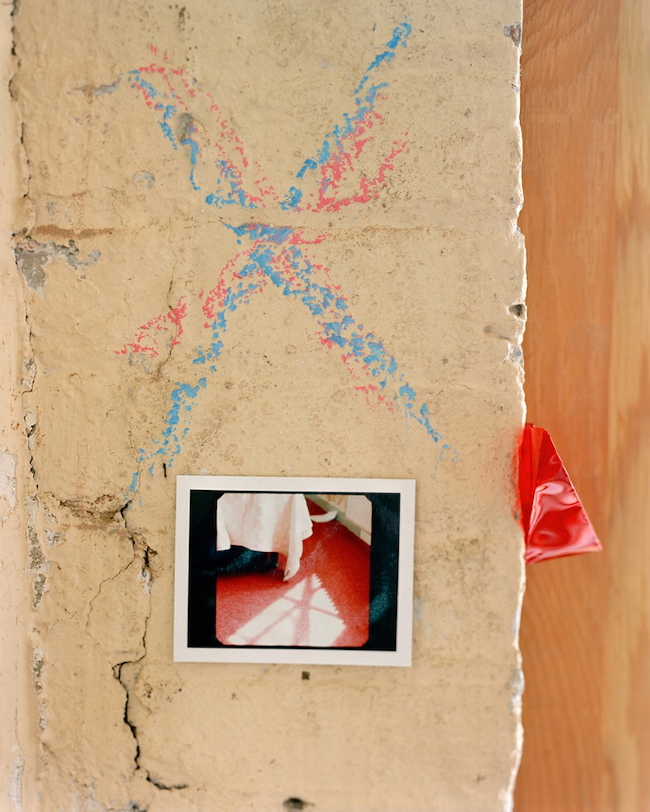 THE VILLAGE OF REASON
The Village of Reason represents a search for tranquility, for “reason” and resurrection, amid the tumult of contemporary life – while acknowledging that chaos is inherent in existence. Unlike traditionally photographic projects, I do not set out for myself parameters that take me to specific places to explore specific subjects. Rather, my work must emerge from my interior practice, from what I read and discover in the world, and bring back to my studio to study or build. The pictures in The Village of Reason fit, perhaps awkwardly, into various photographic genres, with images ranging from the seemingly straight to the experimental. The possible disjointedness of these studies is purposeful: I hope that the viewer will question the connections and contradictions within the works as I present them. The series asks questions but does not necessarily provide answers, is rooted in metaphor, meant to be interrogated, as one would read a poem. Herein, one can view desires both personal and universal, as well as uncertainties and doubts about femininity and identity.
THE VILLAGE OF REASON
The Village of Reason represents a search for tranquility, for “reason” and resurrection, amid the tumult of contemporary life – while acknowledging that chaos is inherent in existence. Unlike traditionally photographic projects, I do not set out for myself parameters that take me to specific places to explore specific subjects. Rather, my work must emerge from my interior practice, from what I read and discover in the world, and bring back to my studio to study or build. The pictures in The Village of Reason fit, perhaps awkwardly, into various photographic genres, with images ranging from the seemingly straight to the experimental. The possible disjointedness of these studies is purposeful: I hope that the viewer will question the connections and contradictions within the works as I present them. The series asks questions but does not necessarily provide answers, is rooted in metaphor, meant to be interrogated, as one would read a poem. Herein, one can view desires both personal and universal, as well as uncertainties and doubts about femininity and identity.
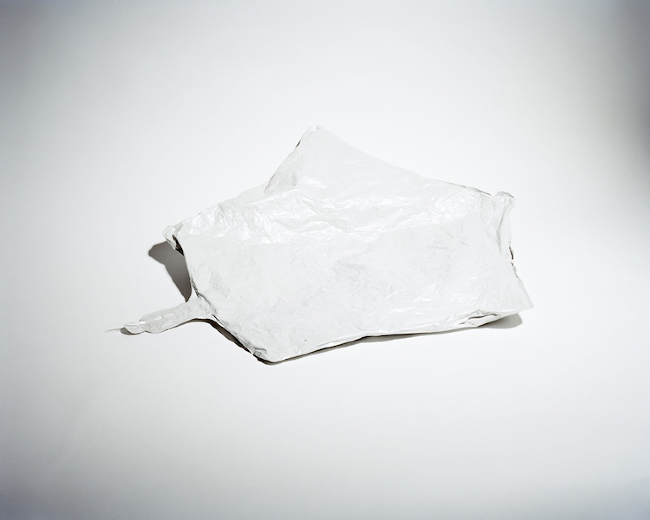
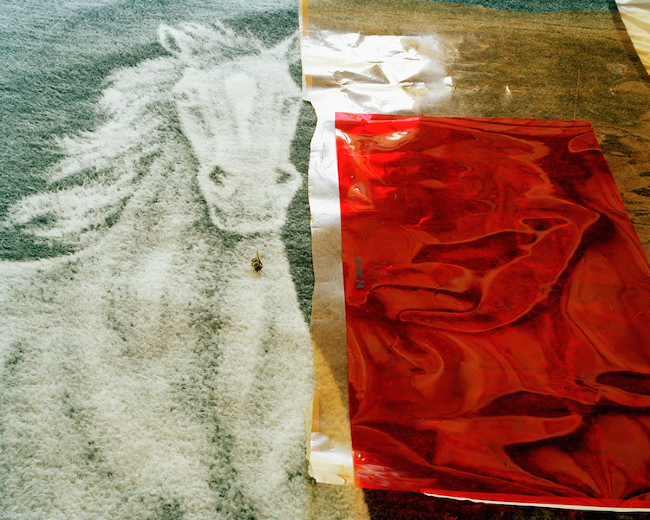
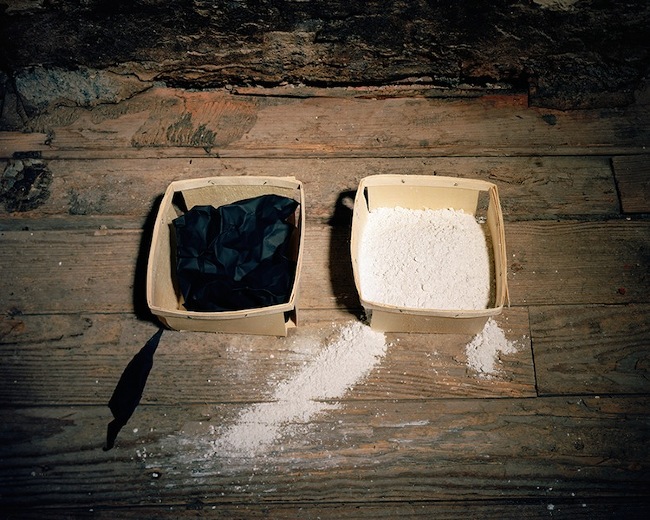
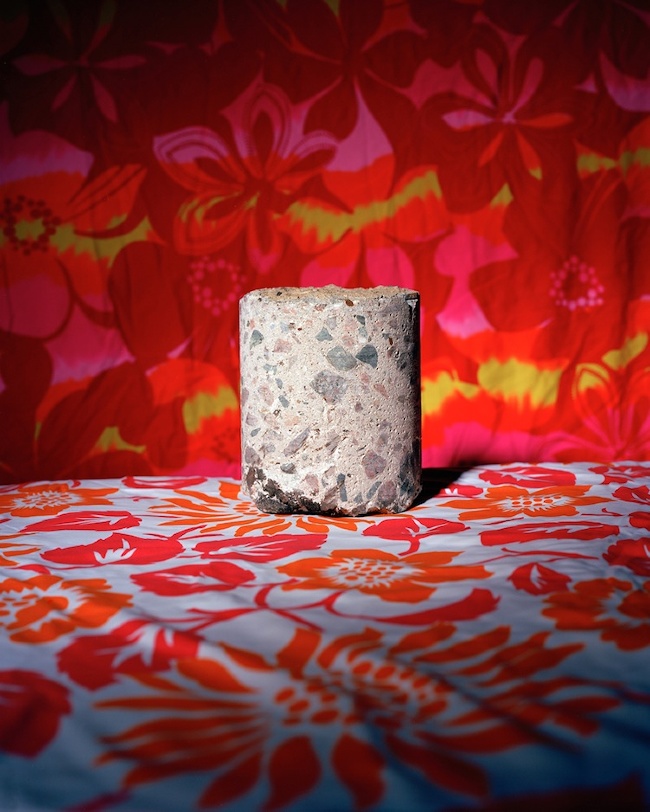
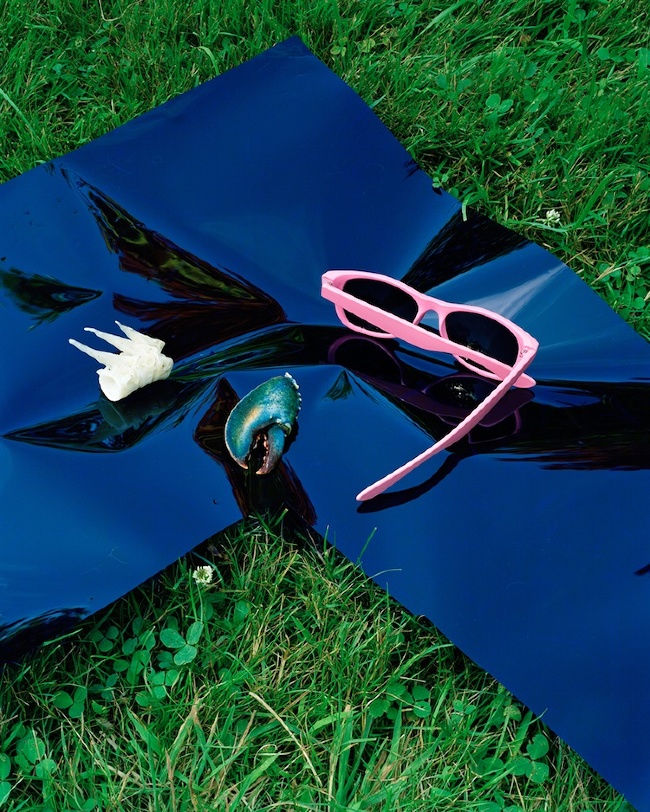
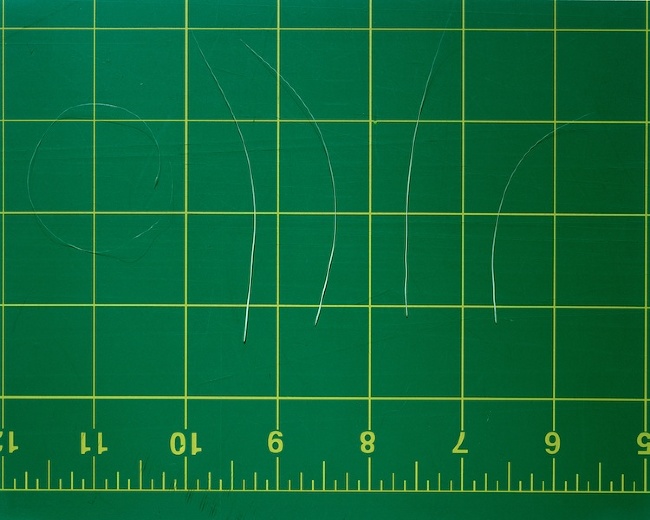
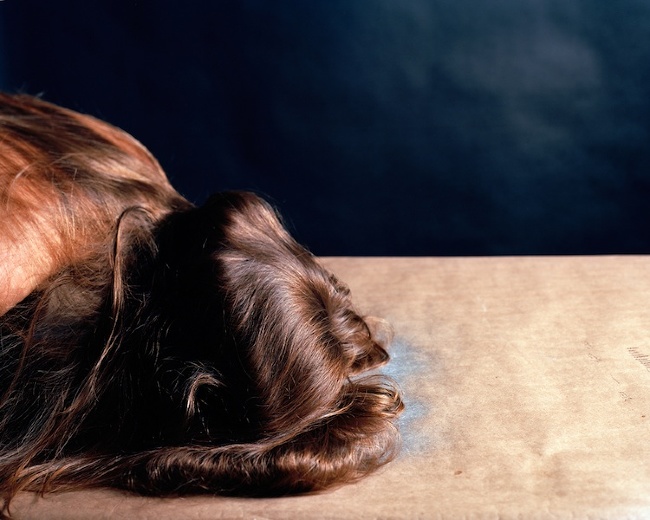
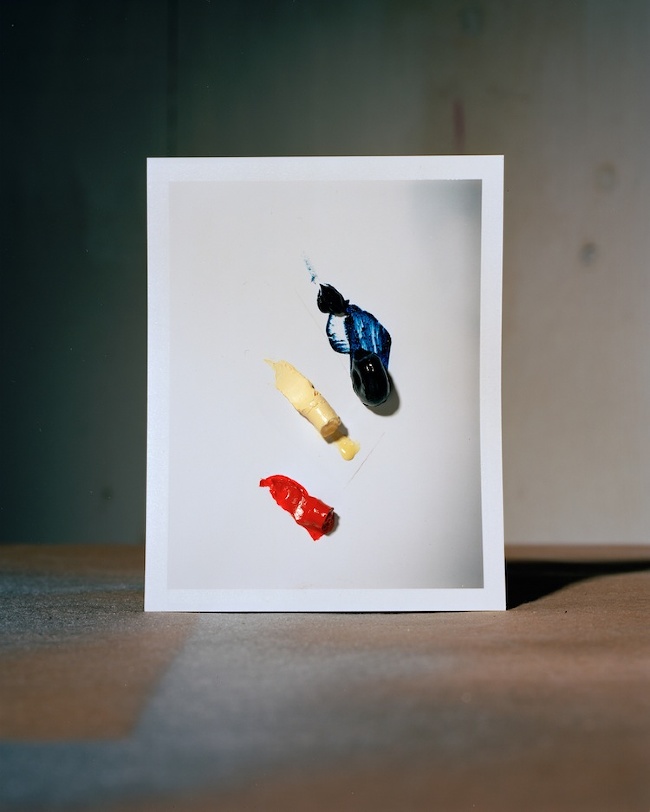 To find out more about Sarah, visit her website.
To find out more about Sarah, visit her website.
 The Treasure Hunter, 2010
Scavenger: Adventures in Treasure Hunting
“There comes a time in every rightly constructed boy's life when he has a raging desire to go somewhere and dig for hidden treasure.” -Mark Twain, The Adventures of Tom Sawyer
Riley grew up in rural eastern Washington. As a child he read Mark Twain’s stories of Tom Sawyer and Huckleberry Finn and decided he wanted to be like those mythical boys. He wanted a life full of treasure and adventure. He got his first metal detector when he was eleven and to this day he continues to seek treasure in the dirt, in sandy beaches or even looking through a handful of change for wheat pennies and real silver. In my project, Scavenger: Adventures in Treasure Hunting, I have been following Riley out on his hunts and photographing the objects he collects. I explore the line between documentary and fantasy as I look at the objects he finds, what drives him to continue and the mythology and history of the treasure hunting persona.
The Treasure Hunter, 2010
Scavenger: Adventures in Treasure Hunting
“There comes a time in every rightly constructed boy's life when he has a raging desire to go somewhere and dig for hidden treasure.” -Mark Twain, The Adventures of Tom Sawyer
Riley grew up in rural eastern Washington. As a child he read Mark Twain’s stories of Tom Sawyer and Huckleberry Finn and decided he wanted to be like those mythical boys. He wanted a life full of treasure and adventure. He got his first metal detector when he was eleven and to this day he continues to seek treasure in the dirt, in sandy beaches or even looking through a handful of change for wheat pennies and real silver. In my project, Scavenger: Adventures in Treasure Hunting, I have been following Riley out on his hunts and photographing the objects he collects. I explore the line between documentary and fantasy as I look at the objects he finds, what drives him to continue and the mythology and history of the treasure hunting persona.
 Dead Horse Bay, 2011
Dead Horse Bay, 2011 Sorting Change, 2009
Sorting Change, 2009 Tom Sawyer's Gang, 2011
In Scavenger I don’t try to reveal Riley’s essence as a traditional portrait would, but build upon it to create a more complicated presence. I express my romantic view of his life and his treasure hunting obsession and choose not to show his daily activities outside of that. By only showing one side of his personality I create a larger than life character. I photograph him in Twain’s spirit, as a mythical adventurer, like Huck Finn and Tom Sawyer.
Tom Sawyer's Gang, 2011
In Scavenger I don’t try to reveal Riley’s essence as a traditional portrait would, but build upon it to create a more complicated presence. I express my romantic view of his life and his treasure hunting obsession and choose not to show his daily activities outside of that. By only showing one side of his personality I create a larger than life character. I photograph him in Twain’s spirit, as a mythical adventurer, like Huck Finn and Tom Sawyer.
 Wrecking Yard, 2012
Wrecking Yard, 2012 The Map, 2011
The Map, 2011 Gold Hunt, Vashon Island, 2011
Gold Hunt, Vashon Island, 2011 Silver, 2011
The objects Riley collects are an escape into this mythology, a fantasy world full of possibilities. Riley finds little monetary reward for treasure hunting since most of his day is spent digging up worthless pull-tabs and random scraps of metal, nevertheless he spends all his free time scavenging. The thrill of the hunt and the spirit of adventure are all he needs to keep going.
Silver, 2011
The objects Riley collects are an escape into this mythology, a fantasy world full of possibilities. Riley finds little monetary reward for treasure hunting since most of his day is spent digging up worthless pull-tabs and random scraps of metal, nevertheless he spends all his free time scavenging. The thrill of the hunt and the spirit of adventure are all he needs to keep going.
 Ephemera, 2011
Ephemera, 2011 Heading Home, 2010
Jenny's work was included in the recent exhibitions Elles: SAM Gallery, Featuring Northwest Women Artists and Push at G. Gibson Gallery. Riffle’s work was published in The Collector's Guide to Emerging Art Photography, by the Humble Arts Foundation and her work has been featured in numerous publications including The Stranger, The Seattle Times, Seattle Weekly and Visionaire. Riffle is currently living in Seattle where she teaches at the Photo Center Northwest and exhibits her work nationally.
To view more of Jenny's work please visit her website.
Heading Home, 2010
Jenny's work was included in the recent exhibitions Elles: SAM Gallery, Featuring Northwest Women Artists and Push at G. Gibson Gallery. Riffle’s work was published in The Collector's Guide to Emerging Art Photography, by the Humble Arts Foundation and her work has been featured in numerous publications including The Stranger, The Seattle Times, Seattle Weekly and Visionaire. Riffle is currently living in Seattle where she teaches at the Photo Center Northwest and exhibits her work nationally.
To view more of Jenny's work please visit her website.
 "Dive/Skok" - 2011
"Dive/Skok" - 2011 "Ziarska Dolina, Western Tatras, Slovakia" - 2012
It is believed that at approximately 28-30 years of age, a person experiences an astrological phenomenon known as Saturn Return. As a distant planet, Saturn takes approximately 2.5 years to traverse one sign and 29 years to complete a cycle around the sun and entire zodiac, returning to the same position it occupied at a person's birth, constituting a full orbit. This cyclical phase of 'return' is ostensibly marked by intensity, transformation, chronological stress, the process of self discovery and a sense of seizing truth.
At this age, and affected by some incredible impulse of self inquiry, I am inspired to explore some of the obscure ideas behind the alleged Saturn Return through the prism of art. A key concept held by astrologers is that a person crosses over a major threshold and enters a new stage of life, which involves evaluating foundations of self awareness. A personal foundation of self awareness is former Czechoslovakia, where I was absorbed for much of my life because of a Czech father.
By coinciding intervals, or 'returns' to Czech Republic, with Saturn returning in my constellation, this ongoing work contemplates the past as a gateway to the present moment. It regards our sensitivity to belief systems that arise from a desire to establish meaning for the Self. Under the influence, it is ultimately a deeply subjective experience of time, archetypes and inspiration.
"Ziarska Dolina, Western Tatras, Slovakia" - 2012
It is believed that at approximately 28-30 years of age, a person experiences an astrological phenomenon known as Saturn Return. As a distant planet, Saturn takes approximately 2.5 years to traverse one sign and 29 years to complete a cycle around the sun and entire zodiac, returning to the same position it occupied at a person's birth, constituting a full orbit. This cyclical phase of 'return' is ostensibly marked by intensity, transformation, chronological stress, the process of self discovery and a sense of seizing truth.
At this age, and affected by some incredible impulse of self inquiry, I am inspired to explore some of the obscure ideas behind the alleged Saturn Return through the prism of art. A key concept held by astrologers is that a person crosses over a major threshold and enters a new stage of life, which involves evaluating foundations of self awareness. A personal foundation of self awareness is former Czechoslovakia, where I was absorbed for much of my life because of a Czech father.
By coinciding intervals, or 'returns' to Czech Republic, with Saturn returning in my constellation, this ongoing work contemplates the past as a gateway to the present moment. It regards our sensitivity to belief systems that arise from a desire to establish meaning for the Self. Under the influence, it is ultimately a deeply subjective experience of time, archetypes and inspiration.
 "Meow" - 2012
"Meow" - 2012 "Bibiana's View/Vyhled Bibiany" - 2012
"Bibiana's View/Vyhled Bibiany" - 2012 "Nettles/Koprivy" - 2012
"Nettles/Koprivy" - 2012 "Czech Girl/Ceska Holka" - 2012
"Czech Girl/Ceska Holka" - 2012 "Father/Otec" - 2012
"Father/Otec" - 2012 "Prefabricated Tower Block/Panelak" - 2012
"Prefabricated Tower Block/Panelak" - 2012 "Water Sprite/Vodnik" - 2012
"Water Sprite/Vodnik" - 2012 "Skalka" - 2011
To view more of Stepanka's work please visit her website.
"Skalka" - 2011
To view more of Stepanka's work please visit her website.
 Dump (near Aiud, West Romania), 2012
Dump (near Aiud, West Romania), 2012  Carpet Sellers (Pojorata, North Romania), 2012
Notes for an Epilogue
Spiritual tradition and physical heritage are simultaneously disintegrating in Romania. Time is beginning to undermine centuries-old traditions preserved in tiny villages, in communities of only a few houses, as well as the bastions of the communist era’s enforced industrialization, which became part and parcel of Romania’s recent history. Those living in the reservations of forgetting blend with nature, exhibiting a humility inherited through generations. Urged on by modernization, they are living out their last days in evident equality of closeness to nature and, helping time, they are diligently pulling down the absurd edifices of their environment. In the manner of termites, they carry away small pieces of immense concrete constructions on the rickety carts of poverty, pick through reinforced concrete frames of former factory monsters, power stations and furnaces, dismantling monuments of formerly enforced modernization which have corroded into a stage set. One year ago, I began photographing the scenes of a world irreversibly decaying, the transformation of a Balkan country surviving the region’s hardest dictatorship. When capturing the still recordable milieu I am examining the parallel of a general tendency and personal stories: as resilient humanity condensing into symbolic destinies takes shape in the face of mortality.
Carpet Sellers (Pojorata, North Romania), 2012
Notes for an Epilogue
Spiritual tradition and physical heritage are simultaneously disintegrating in Romania. Time is beginning to undermine centuries-old traditions preserved in tiny villages, in communities of only a few houses, as well as the bastions of the communist era’s enforced industrialization, which became part and parcel of Romania’s recent history. Those living in the reservations of forgetting blend with nature, exhibiting a humility inherited through generations. Urged on by modernization, they are living out their last days in evident equality of closeness to nature and, helping time, they are diligently pulling down the absurd edifices of their environment. In the manner of termites, they carry away small pieces of immense concrete constructions on the rickety carts of poverty, pick through reinforced concrete frames of former factory monsters, power stations and furnaces, dismantling monuments of formerly enforced modernization which have corroded into a stage set. One year ago, I began photographing the scenes of a world irreversibly decaying, the transformation of a Balkan country surviving the region’s hardest dictatorship. When capturing the still recordable milieu I am examining the parallel of a general tendency and personal stories: as resilient humanity condensing into symbolic destinies takes shape in the face of mortality.
 Abandoned Factory (near Hunedoara, West Romania), 2011
Abandoned Factory (near Hunedoara, West Romania), 2011  Metal Scrap Collector (near Hunedoara, West Romania), 2011
Metal Scrap Collector (near Hunedoara, West Romania), 2011  Hovels (near Moisei, North Romania), 2011
Hovels (near Moisei, North Romania), 2011  Victor (near Geamana, Central Romania), 2011
Victor (near Geamana, Central Romania), 2011 Anastasia (Livada, North West Romania), 2012
Anastasia (Livada, North West Romania), 2012  Sodium Factory (Ocna-Mures, Central Romania), 2012
Sodium Factory (Ocna-Mures, Central Romania), 2012  RailwayStation (Hunedoara, West Romania), 2013
RailwayStation (Hunedoara, West Romania), 2013 Costica (Muntele Mare, West Romania), 2012
Costica (Muntele Mare, West Romania), 2012 Near Calan (Calan, West Romania), 2011
Near Calan (Calan, West Romania), 2011  Ciprian, the Bear Dancer (Salatruc, East Romania), 2013
Ciprian, the Bear Dancer (Salatruc, East Romania), 2013 Tunnel (near Vidraru Dam, Central Romania), 2013
Tunnel (near Vidraru Dam, Central Romania), 2013 The Flooded Village of Geamana (Geamana, Central Romania), 2011
The Flooded Village of Geamana (Geamana, Central Romania), 2011 Sheep farm (Silvasu de Sus, West Romania), 2011
Sheep farm (Silvasu de Sus, West Romania), 2011 Choir (near Abrud, West Romania), 2012
Tamas is currently working on the production of a book project (Notes for an Epilogue) with his partner, Eszter Szablyar who is a writer. The book is planned to be publish in 2014.
To view more of Tamas work please visit his website.
Choir (near Abrud, West Romania), 2012
Tamas is currently working on the production of a book project (Notes for an Epilogue) with his partner, Eszter Szablyar who is a writer. The book is planned to be publish in 2014.
To view more of Tamas work please visit his website.
 “It is now 09:06 of November 9, 2011, and I am onboard the flight TP 1573 to Madeira Island. (...) I am on my way home, to Madeira Island, and I feel nervous as if it was an unknown place. But I will meet a new Madeira, or at least with different eyes and interests, trying to find new, different and transformed places. The airplane begins to descend. Madeira is down there. From far we can understand the feeling that the fifteenth century discoverers had when they saw Madeira (= Wood) for the first time, and from there we can easily guess the origin of the name. An intense tropical vegetation fills and covers the island of green, but I cannot help but noticing the various urban clusters, scattered houses, roads and highways and the megalomaniac construction of the new airport. The constructed confronts the natural on a dual mode. Large scars are open, but the consummation of the act makes the built elements part of the landscape. This new landscape causes both fascination and disbelief and it is as beautiful as ugly.”
09/11/11 (1st Day - Excerpt from Travel Diary) - Tiago Casanova
“It is now 09:06 of November 9, 2011, and I am onboard the flight TP 1573 to Madeira Island. (...) I am on my way home, to Madeira Island, and I feel nervous as if it was an unknown place. But I will meet a new Madeira, or at least with different eyes and interests, trying to find new, different and transformed places. The airplane begins to descend. Madeira is down there. From far we can understand the feeling that the fifteenth century discoverers had when they saw Madeira (= Wood) for the first time, and from there we can easily guess the origin of the name. An intense tropical vegetation fills and covers the island of green, but I cannot help but noticing the various urban clusters, scattered houses, roads and highways and the megalomaniac construction of the new airport. The constructed confronts the natural on a dual mode. Large scars are open, but the consummation of the act makes the built elements part of the landscape. This new landscape causes both fascination and disbelief and it is as beautiful as ugly.”
09/11/11 (1st Day - Excerpt from Travel Diary) - Tiago Casanova

 The Hybrid Landscape Series intend to guide the spectator on a trip around Madeira Island (Portugal), through a fictional route that highlights relationships and confrontations between the various elements that compose this territory. A confrontation between The Wild and Transformation, resulting into a hybrid being Nature-Construction.
From Hybridity I am interested about this cross-species process, which at first sight we cannot even define what species they are, resulting in an even more enigmatic non-human being that inhabits the contemporary territory, that is sterile and causes discomfort for not fitting into any type or pattern. From Nature we cannot even assess very well the degree of “naturalness”, because the human presence has made its influence even it the wildest of the territories.
The Hybrid Landscape Series intend to guide the spectator on a trip around Madeira Island (Portugal), through a fictional route that highlights relationships and confrontations between the various elements that compose this territory. A confrontation between The Wild and Transformation, resulting into a hybrid being Nature-Construction.
From Hybridity I am interested about this cross-species process, which at first sight we cannot even define what species they are, resulting in an even more enigmatic non-human being that inhabits the contemporary territory, that is sterile and causes discomfort for not fitting into any type or pattern. From Nature we cannot even assess very well the degree of “naturalness”, because the human presence has made its influence even it the wildest of the territories.

 I am interested about absorbing imagetically this transgenesis, since the concept of 'Natural' was the first to inhabit this territory, remembering that in the act of discovery in the fifteenth century the island was baptized with the name of 'Madeira' (= Wood), necessarily connoted with the wild natural state in which the island was found.
This series arises from the Project Madeira – European Borderlines, and is my first draft and exploration of the territory within the proposed work, building a travelogue through text and instant photography. A very personal contact that shows a relationship with the place, with the history and its politics. An intimate narrative construction enhanced by the instantaneity of the image that drive us into a diaristic process.
I am interested about absorbing imagetically this transgenesis, since the concept of 'Natural' was the first to inhabit this territory, remembering that in the act of discovery in the fifteenth century the island was baptized with the name of 'Madeira' (= Wood), necessarily connoted with the wild natural state in which the island was found.
This series arises from the Project Madeira – European Borderlines, and is my first draft and exploration of the territory within the proposed work, building a travelogue through text and instant photography. A very personal contact that shows a relationship with the place, with the history and its politics. An intimate narrative construction enhanced by the instantaneity of the image that drive us into a diaristic process.




 For more work, please visit his website.
For more work, please visit his website.
 In this particular work Montreal I was asked by the Canadian Centre for Architecture (CCA) to make a body of work for their exhibition ABC:MTL. I was given one week in Montreal to produce a single narrative around my experience of the city during winter. It was a sort of phenomenological experiment. I think photographers are especially influenced by their surroundings as it makes up the bulk of our work. We move through locations that are either by choice or not looking for potential images. It is very hard to not have these spaces affect us and thus the work we make. The photographs denote a contingency while ruminating on the banal, everyday, and often overlooked aspects of a society. They are but one result of wondering through frigid urban streets for one week.
In this particular work Montreal I was asked by the Canadian Centre for Architecture (CCA) to make a body of work for their exhibition ABC:MTL. I was given one week in Montreal to produce a single narrative around my experience of the city during winter. It was a sort of phenomenological experiment. I think photographers are especially influenced by their surroundings as it makes up the bulk of our work. We move through locations that are either by choice or not looking for potential images. It is very hard to not have these spaces affect us and thus the work we make. The photographs denote a contingency while ruminating on the banal, everyday, and often overlooked aspects of a society. They are but one result of wondering through frigid urban streets for one week.










 For more work, please visit his website.
For more work, please visit his website.
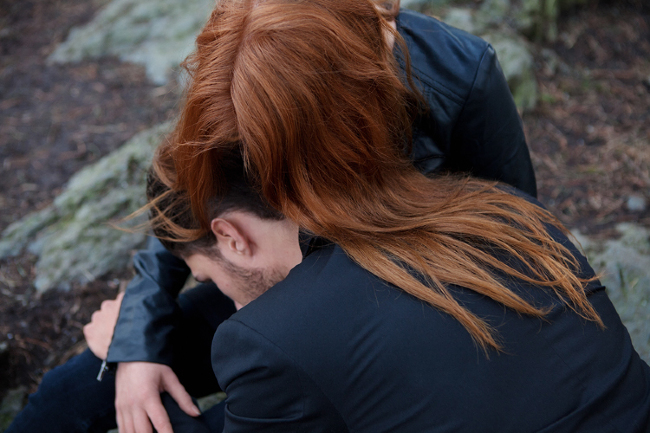 Ursula was born in Amsterdam, Netherlands. Whilst researching her family tree back in 2010, she uncovered her ancestral Norwegian roots. Intrigued by and excited about this discovery, she decided to travel to Norway in the summer of that same year. During this trip she developed an intrinsic fascination and love for the country and its culture; she has since come to feel the same for Scandinavia as a whole.
Characters of Jante is based on the book En Flyktning Krysser Sitt Spor (A Fugitive Crosses His Tracks), written around 1930 by Danish/Norwegian author Aksel Sandemose.
In his book Sandemose creates an imaginary small village called Jante, its population strictly abiding by the Law of Jante. The book’s protagonist, Espen Arnakke, finds himself in a crisis, as a result of which he is forced to delve in to his past, and in particular uncover his traumatic childhood in Jante. He attempts an inner quest fuelled by the hope and desire to find an explanation for the rage, that lead him to murder a friend seventeen years ago.
At the time, Sandemose could never have foreseen that his Law of Jante would become so influential and would come to take such a prominent and determining place in the mind of Scandinavians. For even though the book itself is not widely read anymore, most Scandinavians are familiar with this infamous Law.
Ursula was born in Amsterdam, Netherlands. Whilst researching her family tree back in 2010, she uncovered her ancestral Norwegian roots. Intrigued by and excited about this discovery, she decided to travel to Norway in the summer of that same year. During this trip she developed an intrinsic fascination and love for the country and its culture; she has since come to feel the same for Scandinavia as a whole.
Characters of Jante is based on the book En Flyktning Krysser Sitt Spor (A Fugitive Crosses His Tracks), written around 1930 by Danish/Norwegian author Aksel Sandemose.
In his book Sandemose creates an imaginary small village called Jante, its population strictly abiding by the Law of Jante. The book’s protagonist, Espen Arnakke, finds himself in a crisis, as a result of which he is forced to delve in to his past, and in particular uncover his traumatic childhood in Jante. He attempts an inner quest fuelled by the hope and desire to find an explanation for the rage, that lead him to murder a friend seventeen years ago.
At the time, Sandemose could never have foreseen that his Law of Jante would become so influential and would come to take such a prominent and determining place in the mind of Scandinavians. For even though the book itself is not widely read anymore, most Scandinavians are familiar with this infamous Law.

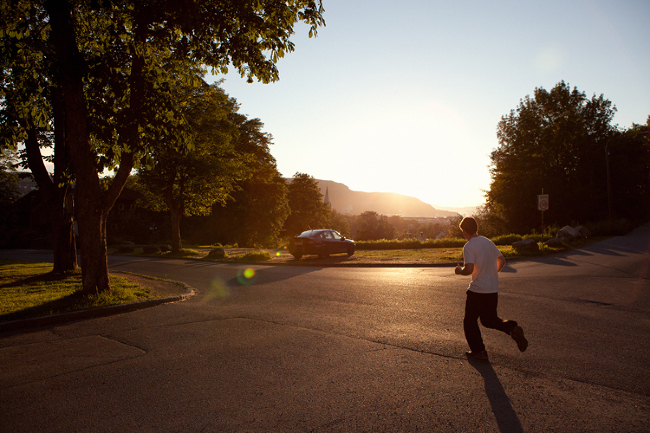
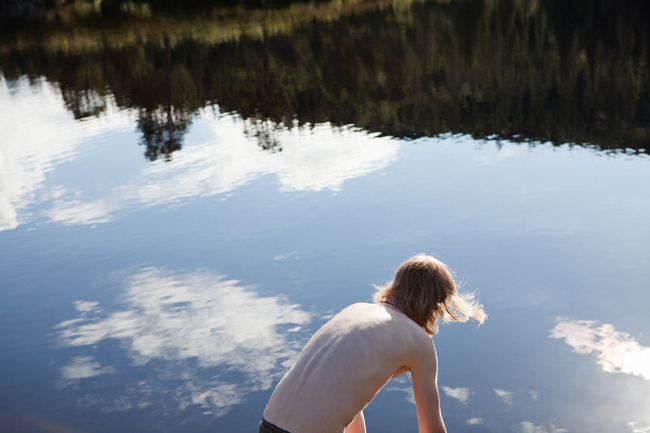 In general, the Law of Jante describes the tyranny of the mediocre and resolutely demands that anyone above average has to pay for being so. According to the renowned Norwegian social anthropologist Thomas Hylland Eriksen: “It expresses an ideology of equality which depreciates the original and the unusual. It is widely held that the Law of Jante is a deeply embedded aspect of Scandinavian culture, and that it discourages brilliance and high achievements.”
One might argue that, the typical ‘Jante-mentality’ is very similar to the mind-set of people in any small village around the world. In such small villages everyone knows one another and one another’s business, there is a constant control of the ever present neighbour - spying, gossiping, judging, and criticising. Hence, in essence the Law of Jante could be considered as a Scandinavian version of the English 'tall poppy syndrome’.
Characters of Jante introduces us to a number of individuals living in the fictional village of Jante, and shows us the sheer silence of the desolate landscapes that surround them.
In general, the Law of Jante describes the tyranny of the mediocre and resolutely demands that anyone above average has to pay for being so. According to the renowned Norwegian social anthropologist Thomas Hylland Eriksen: “It expresses an ideology of equality which depreciates the original and the unusual. It is widely held that the Law of Jante is a deeply embedded aspect of Scandinavian culture, and that it discourages brilliance and high achievements.”
One might argue that, the typical ‘Jante-mentality’ is very similar to the mind-set of people in any small village around the world. In such small villages everyone knows one another and one another’s business, there is a constant control of the ever present neighbour - spying, gossiping, judging, and criticising. Hence, in essence the Law of Jante could be considered as a Scandinavian version of the English 'tall poppy syndrome’.
Characters of Jante introduces us to a number of individuals living in the fictional village of Jante, and shows us the sheer silence of the desolate landscapes that surround them.
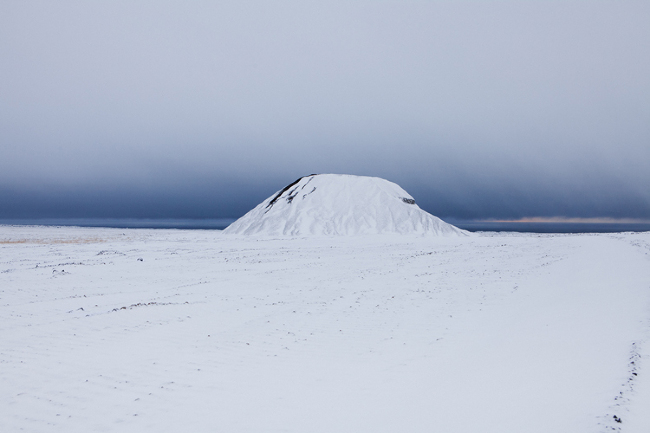
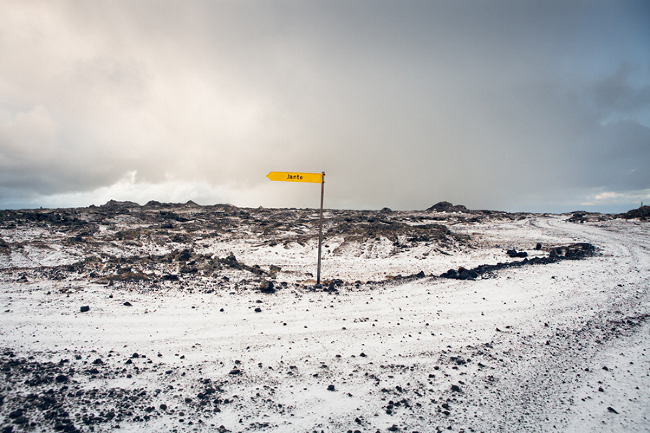
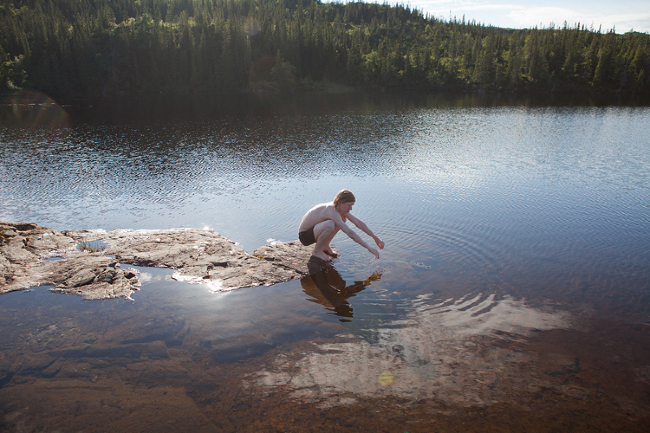
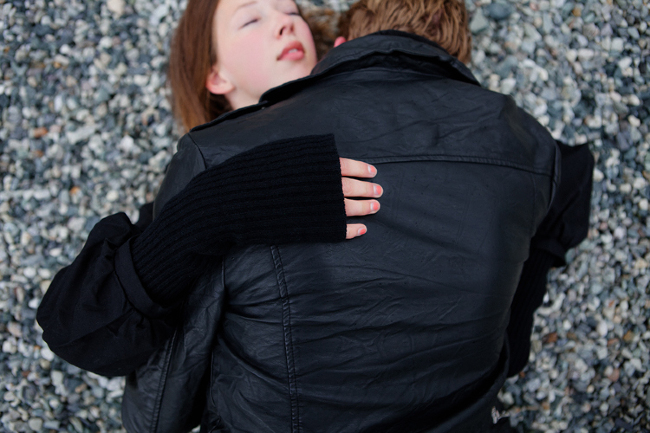

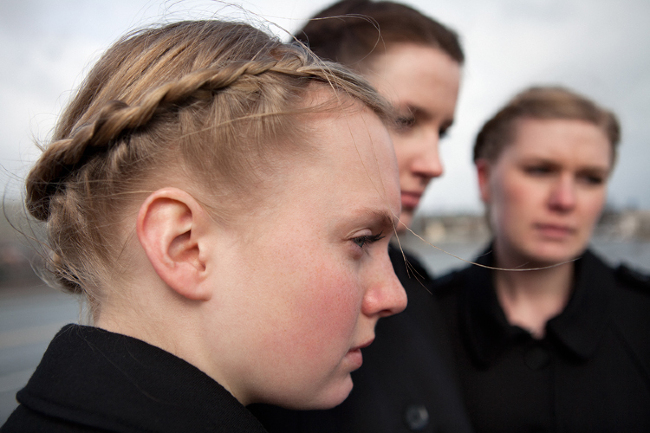 ---
---
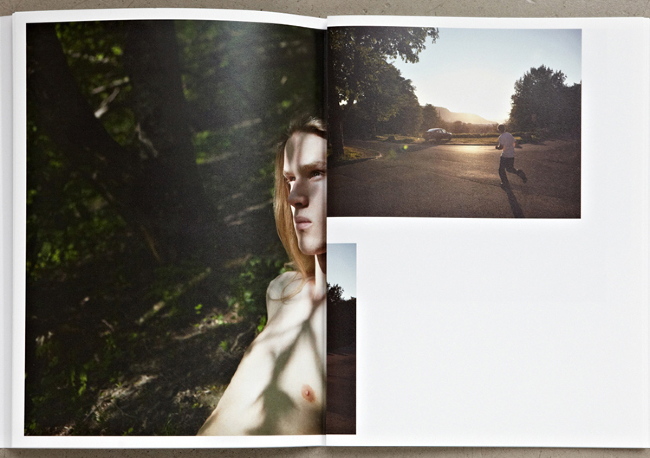

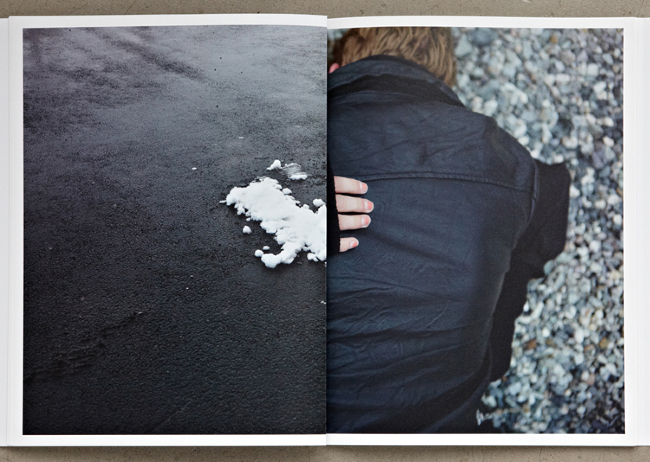
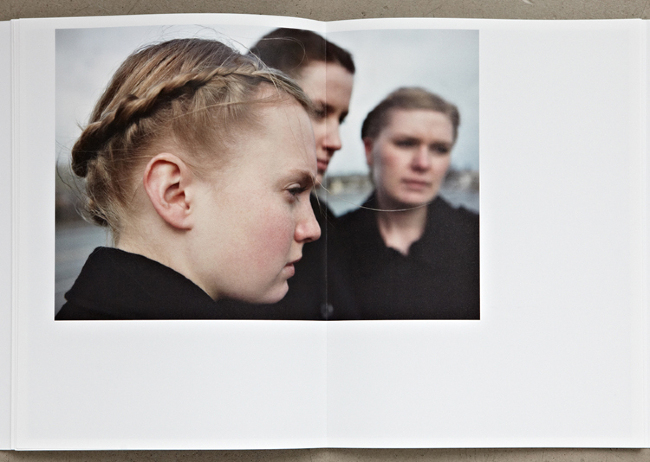 Characters of Jante was self-published in 2012 and is currently being sold in Germany, Japan, the Netherlands, the United Kingdom and the United States.
For more information, please visit her website.
Characters of Jante was self-published in 2012 and is currently being sold in Germany, Japan, the Netherlands, the United Kingdom and the United States.
For more information, please visit her website.
 "I dream the stone dream,
the grass dream,
the river running through my
fingerbones
one hundred and fifty years away"
- Charles Bukowski
"I dream the stone dream,
the grass dream,
the river running through my
fingerbones
one hundred and fifty years away"
- Charles Bukowski

 I grew up out in the country. A peaceful and quiet childhood, in a big house on top of a hill, surrounded by trees, not far from a lake. Today, I live and work in Paris, a life of tiny spaces, urgency and crowded places made of concrete. My daily ordeal.
Onshore Daylight is a cathartic photographic series. An escape.
Far from bustle, up there in the north of Europe, I travelled seeking isolation between land and ocean. A place deprived of the violence of the instant, where time freezes in space. Thus, in a deliberately slow approach, I looked for the horizon, and my own solitude.
I grew up out in the country. A peaceful and quiet childhood, in a big house on top of a hill, surrounded by trees, not far from a lake. Today, I live and work in Paris, a life of tiny spaces, urgency and crowded places made of concrete. My daily ordeal.
Onshore Daylight is a cathartic photographic series. An escape.
Far from bustle, up there in the north of Europe, I travelled seeking isolation between land and ocean. A place deprived of the violence of the instant, where time freezes in space. Thus, in a deliberately slow approach, I looked for the horizon, and my own solitude.







 For more information please visit his website.
For more information please visit his website.
 Mom Cooling Off in the Pool, 2012
In Next of Kin I explore the concept of home by recording my perceptions of family members in parables of love, reverie respect and quiet tragedy. After a yearlong hiatus from my hometown, I returned to reexamine my relationship with loved ones. I use the camera to describe the powerful personalities of my parents, and the complexities of their relationship. I photograph the children in my family to revisit my own childhood, which exists only as a set of fleeting, enigmatic images in my aging memory. By studying the hierarchy of control and power within the clan, I have begun to comprehend the successes and failures of my own relationships outside the family unit. My artistic process has become cathartic as I use the camera to explore my own impressions and memories of these influential characters that continue to shape my existence.
Mom Cooling Off in the Pool, 2012
In Next of Kin I explore the concept of home by recording my perceptions of family members in parables of love, reverie respect and quiet tragedy. After a yearlong hiatus from my hometown, I returned to reexamine my relationship with loved ones. I use the camera to describe the powerful personalities of my parents, and the complexities of their relationship. I photograph the children in my family to revisit my own childhood, which exists only as a set of fleeting, enigmatic images in my aging memory. By studying the hierarchy of control and power within the clan, I have begun to comprehend the successes and failures of my own relationships outside the family unit. My artistic process has become cathartic as I use the camera to explore my own impressions and memories of these influential characters that continue to shape my existence.
 Dad in His Man Cave, 2012
Dad in His Man Cave, 2012 Jake’s Embrace, 2012
Jake’s Embrace, 2012
 Dad’s Front, 2012
Dad’s Front, 2012
 Lila’s Presence, 2012
Lila’s Presence, 2012
 Mom Has the Final Say, 2012
Mom Has the Final Say, 2012 Mom’s Vanity, 2012
Mom’s Vanity, 2012
 Jake Gets Caught in His Own Net, 2013
Jake Gets Caught in His Own Net, 2013 Dad Preparing His Meat, 2012
Dad Preparing His Meat, 2012 Accessories, 2012
Accessories, 2012 Mom As Martyr, 2012
Mom As Martyr, 2012 Singed, 2013
Singed, 2013 Mom’s Clutch, 2012
Mom’s Clutch, 2012
 Jake Plays with Fire, 2012
Jake Plays with Fire, 2012 Dad’s Thinking Tree, 2012
Please visit his website for more information.
Dad’s Thinking Tree, 2012
Please visit his website for more information.

 Star City
Star City still does not appear on any maps.
Deep within the forest, surrounded by barbed wire, the highly secretive Star City holds the soul of the Russian people. A closed community, where entry involves lengthy negotiations, permission letters and brown envelopes, the Yuri Gagarin Russian State Science Research Cosmonaut Training Centre, has been the training centre for all Soviet and post Soviet Cosmonauts since the late 1950’s.Yuri Gagarin trained here, his wife still lives here, his children live here. Generations of cosmonauts have trained in these surroundings. The city holds the weight of the past, with traces of history, power and a ghost like presence.Dreams of outer space have been a constant in Soviet society since 1920s. Surviving perestroika and the break up of the Soviet Union in 1991, heroic ideas of the future dominate over the present and are a vital source of power and hope. Star City is the symbol of soviet scientific technical progress, strengthening and recovering Russia’s Cosmonauts prestige worldwide. Photographing here, in the inner sanctum, bears important witness to that hope.
I arrive in the forest, find my way through the trees and enter the city of hope.
Star City
Star City still does not appear on any maps.
Deep within the forest, surrounded by barbed wire, the highly secretive Star City holds the soul of the Russian people. A closed community, where entry involves lengthy negotiations, permission letters and brown envelopes, the Yuri Gagarin Russian State Science Research Cosmonaut Training Centre, has been the training centre for all Soviet and post Soviet Cosmonauts since the late 1950’s.Yuri Gagarin trained here, his wife still lives here, his children live here. Generations of cosmonauts have trained in these surroundings. The city holds the weight of the past, with traces of history, power and a ghost like presence.Dreams of outer space have been a constant in Soviet society since 1920s. Surviving perestroika and the break up of the Soviet Union in 1991, heroic ideas of the future dominate over the present and are a vital source of power and hope. Star City is the symbol of soviet scientific technical progress, strengthening and recovering Russia’s Cosmonauts prestige worldwide. Photographing here, in the inner sanctum, bears important witness to that hope.
I arrive in the forest, find my way through the trees and enter the city of hope.




 To view more of Mitch's work, please visit her website.
To view more of Mitch's work, please visit her website.



 Edition of 100. 6 x 8 in. Perfect bound soft cover, Gilt foil stamped cover, 94 pages, 44 color photographs.
After Wake
After Wake is a collection of visual fragments & anonymous female subjects from the artist’s daily life. Separated from the minutia of McElroy’s lived reality, however, the photographs also allow for an endless drift of fictitious suggestion & voyeurism. After Wake can be a half-alert morning recollection of disjointed dreams. Or it's a catalog of contradictory eyewitness accounts. It may also be something like the outtakes from a B movie chronicling pleasure, grotesque beauty, infidelity, addiction, abuse & redemption. In short, After Wake is a collection of provoking photographs by McElory that eschews concept & meaning in favor of imagination & a stream of inchoate ideas.
Edition of 100. 6 x 8 in. Perfect bound soft cover, Gilt foil stamped cover, 94 pages, 44 color photographs.
After Wake
After Wake is a collection of visual fragments & anonymous female subjects from the artist’s daily life. Separated from the minutia of McElroy’s lived reality, however, the photographs also allow for an endless drift of fictitious suggestion & voyeurism. After Wake can be a half-alert morning recollection of disjointed dreams. Or it's a catalog of contradictory eyewitness accounts. It may also be something like the outtakes from a B movie chronicling pleasure, grotesque beauty, infidelity, addiction, abuse & redemption. In short, After Wake is a collection of provoking photographs by McElory that eschews concept & meaning in favor of imagination & a stream of inchoate ideas.









 Aaron's work was part of group exhibitions at FOAM Photography Museum, Amsterdam, NL, Smack Mellon, Brooklyn, NY, Chelsea Art Museum, NY, NY., and Noorderlicht gallery Groningen, NL, among others. In 2013, two monographs were published: “Aaron McElroy: SPBN”, with Self Publish Be Happy, and “After Wake”, with Ampersand Gallery. As part of the collective AM projects, he was included in Nocturnes, a limited edition six person box set, designed and published by dienacht Publishing. Nocturnes was selected for “The books we loved” in 2012 by Time Magazine, and was part of the exhibit ICP Triennial, International Center for Photography, NY, NY. Most recently he featured in the book Nudity Today: edited by Jesse Pearson and published by Picture Box.
Check out Ampersand Gallery and Fine Books.
To view more of Aaron's work, please visit his website.
Aaron's work was part of group exhibitions at FOAM Photography Museum, Amsterdam, NL, Smack Mellon, Brooklyn, NY, Chelsea Art Museum, NY, NY., and Noorderlicht gallery Groningen, NL, among others. In 2013, two monographs were published: “Aaron McElroy: SPBN”, with Self Publish Be Happy, and “After Wake”, with Ampersand Gallery. As part of the collective AM projects, he was included in Nocturnes, a limited edition six person box set, designed and published by dienacht Publishing. Nocturnes was selected for “The books we loved” in 2012 by Time Magazine, and was part of the exhibit ICP Triennial, International Center for Photography, NY, NY. Most recently he featured in the book Nudity Today: edited by Jesse Pearson and published by Picture Box.
Check out Ampersand Gallery and Fine Books.
To view more of Aaron's work, please visit his website.

 Teeth of the Sea
Maggie Shannon grew up in Martha’s Vineyard, a Massachusetts island best known as a summer beach colony. Teeth of the Sea explores Islanders’ ambivalent relationship with the sea and with outsiders by focusing on the enduring memory of two historical events: the 1969 tragic drowning of Mary Jo Kopeckne, which ended the presidential hopes of Senator Edward Kennedy; and the 1975 making of Steven Spielberg's thriller Jaws, which employed local residents as extras.
Teeth of the Sea
Maggie Shannon grew up in Martha’s Vineyard, a Massachusetts island best known as a summer beach colony. Teeth of the Sea explores Islanders’ ambivalent relationship with the sea and with outsiders by focusing on the enduring memory of two historical events: the 1969 tragic drowning of Mary Jo Kopeckne, which ended the presidential hopes of Senator Edward Kennedy; and the 1975 making of Steven Spielberg's thriller Jaws, which employed local residents as extras.







 To view more of Maggie's work please visit her website.
To view more of Maggie's work please visit her website.
 "Yonder Journal is the exploration of American Frontiers and Western Principles. We are Cultural Anthropologists and Sportsmen compelled into the Wilderness to explore, document and publish a lasting and meaningful record of our experiences there."
"Yonder Journal is the exploration of American Frontiers and Western Principles. We are Cultural Anthropologists and Sportsmen compelled into the Wilderness to explore, document and publish a lasting and meaningful record of our experiences there."
 Yonder is producing a series of "guides cataloguing swimming holes, hot springs, primitive campsites, fire towers, wilderness areas and brovets; a collection of studies on adventure cycling, wildlife biology, pack-rafting, mountain hunting campaigns, rendezvous, randonnuering and ranching as well as various other pursuits, sportsmen and environments" additionally, Yonder will chronicle their experiences in the field through a series of briefs.
It has been a year since I last worked with Emiliano, I took a few minutes out of his busy day to ask him a few questions about this new project and about how he manages to accomplish so much while at the same time raising a family.
What was the biggest obstacle that you faced when trying to launch this project?
Funding. In order for this project to exist, it needs to be funded. The scope is too big for it to be 100% self funded. So we've had to convince people that it's a worthwhile investment.
I was working with you last summer when this project was in its beginning phases. How has it transformed since then? Is it what you initially set out to create or has it warped into something new?
It's basically the original vision. Things have been tweaked, but it's always been a self published, underwritten project about the outdoors, frontiers, cultural studies, etc. This is a way to publish the projects we want to shoot without waiting for magazines to assign them to us.
Yonder is producing a series of "guides cataloguing swimming holes, hot springs, primitive campsites, fire towers, wilderness areas and brovets; a collection of studies on adventure cycling, wildlife biology, pack-rafting, mountain hunting campaigns, rendezvous, randonnuering and ranching as well as various other pursuits, sportsmen and environments" additionally, Yonder will chronicle their experiences in the field through a series of briefs.
It has been a year since I last worked with Emiliano, I took a few minutes out of his busy day to ask him a few questions about this new project and about how he manages to accomplish so much while at the same time raising a family.
What was the biggest obstacle that you faced when trying to launch this project?
Funding. In order for this project to exist, it needs to be funded. The scope is too big for it to be 100% self funded. So we've had to convince people that it's a worthwhile investment.
I was working with you last summer when this project was in its beginning phases. How has it transformed since then? Is it what you initially set out to create or has it warped into something new?
It's basically the original vision. Things have been tweaked, but it's always been a self published, underwritten project about the outdoors, frontiers, cultural studies, etc. This is a way to publish the projects we want to shoot without waiting for magazines to assign them to us.


 Where do you see Yonder Journal in the next 5 years?
I hope to see it still publishing. I hope it becomes a platform for myself and many others to publish work that is deemed "unpublishable" by the publishing standards. I hope to see it become more analog. I hope to see it profitable. I hope it's inspiring to tens of thousands of people.
How much of your work load does Yonder Journal occupy? Is it hard to find time to dedicate to this project?
Its around 50% of my time, probably. It's hard to manage this and an editorial/commercial career. The goal is that YJ will created more commercial/editorial work, though.
You've always been very successful at combining projects together in order to make multiple stories / bodies of work. (I.E. when you shot the cruise trip for Budget Travel and then made a personal body and a newsprint publication) Have you been able to do this with Yonder Journal? Do you plan to utilize this ability with this project?
In many ways, I've been using editorial jobs to create personal work. With YJ, it's kinda the other way around - I'm shooting personal work to get more paying jobs. YJ represents a way for me to shoot things exactly how I want to shoot them. There's no compromising for the sake of a job or an editor.
Where do you see Yonder Journal in the next 5 years?
I hope to see it still publishing. I hope it becomes a platform for myself and many others to publish work that is deemed "unpublishable" by the publishing standards. I hope to see it become more analog. I hope to see it profitable. I hope it's inspiring to tens of thousands of people.
How much of your work load does Yonder Journal occupy? Is it hard to find time to dedicate to this project?
Its around 50% of my time, probably. It's hard to manage this and an editorial/commercial career. The goal is that YJ will created more commercial/editorial work, though.
You've always been very successful at combining projects together in order to make multiple stories / bodies of work. (I.E. when you shot the cruise trip for Budget Travel and then made a personal body and a newsprint publication) Have you been able to do this with Yonder Journal? Do you plan to utilize this ability with this project?
In many ways, I've been using editorial jobs to create personal work. With YJ, it's kinda the other way around - I'm shooting personal work to get more paying jobs. YJ represents a way for me to shoot things exactly how I want to shoot them. There's no compromising for the sake of a job or an editor.


 Being a new dad means being at home right? Is it hard / frustrating to sacrifice traveling for time with the newborn?
SUPER HARD. Very VERY HARD.
Speaking of babes, how is little Queso? What's fatherhood like?
It's difficult. It's riddled with guilt. It's a logistical nightmare. But it's wonderful too.
Can we expect to see some cool publications / newsprints from this project? You know we love tangibility!
FUCK YES. That is a project mandate. While YJ lives online mostly, the idea is that printed pieces and tangible material will always be the end product.
If you had to sell Yonder Journal in one sentence how would you do it?
Daniel did a great job with the Manifesto: Yonder Journal is the exploration of American Frontiers and Western Principles.
For more information about their project, check out their website.
Article by Carson Sanders and Matt Szal
Being a new dad means being at home right? Is it hard / frustrating to sacrifice traveling for time with the newborn?
SUPER HARD. Very VERY HARD.
Speaking of babes, how is little Queso? What's fatherhood like?
It's difficult. It's riddled with guilt. It's a logistical nightmare. But it's wonderful too.
Can we expect to see some cool publications / newsprints from this project? You know we love tangibility!
FUCK YES. That is a project mandate. While YJ lives online mostly, the idea is that printed pieces and tangible material will always be the end product.
If you had to sell Yonder Journal in one sentence how would you do it?
Daniel did a great job with the Manifesto: Yonder Journal is the exploration of American Frontiers and Western Principles.
For more information about their project, check out their website.
Article by Carson Sanders and Matt Szal

 Eurasism
Moving a capital city is an important decision. In 1998, Kazakhstan unveiled its new capital and Almaty lost its status to Astana, located 1300 kilometers up North.
As the world’s most recent capital city after Pyinmana(Myanmar), Astana is also the symbol of a new start, a unique initiative in the Post-Soviet region. This colossal project, the challenge to nature that is the construction of a capital city in an extreme climate which requires the laying of specific foundations, shows the will to break up with the past, to implement historic reforms and to encourage an appropriation of identity.
Considerable means have been deployed so that Astana could assume its role as the country’s new showcase city, while promoting the country’s development and insertion
into the global economy...
Eurasism
Moving a capital city is an important decision. In 1998, Kazakhstan unveiled its new capital and Almaty lost its status to Astana, located 1300 kilometers up North.
As the world’s most recent capital city after Pyinmana(Myanmar), Astana is also the symbol of a new start, a unique initiative in the Post-Soviet region. This colossal project, the challenge to nature that is the construction of a capital city in an extreme climate which requires the laying of specific foundations, shows the will to break up with the past, to implement historic reforms and to encourage an appropriation of identity.
Considerable means have been deployed so that Astana could assume its role as the country’s new showcase city, while promoting the country’s development and insertion
into the global economy...


 If architecture generally bears the signs of a particular culture, the face of the new capital city is also one of power and, on a symbolic level, of a new political orientation. The new official buildings are sometimes colossal, bordering on disproportion, the skeletons of ill-assorted buildings rise from this suburban-like area, which vacillates between authenticity and artifice, between materiality and imagination tinged with utopia.
As an immense construction site,where embassies and upscale residences rise next to vast buildings meant to house all state organs, Astana seems impossible to finish and struggles to maintain all its empty spaces in a good state. Although grass is growing and casually occupying all interstices,the official discourse has to remain enthusiastic and seductive.
Aiming at a brighter future for migrants, these buildings showcase the State as a viable sociability frame. An ensemble of ornamental elements, where the rare dramatized vegetation gets by while seeming to admit it is insufficiently implanted.
If architecture generally bears the signs of a particular culture, the face of the new capital city is also one of power and, on a symbolic level, of a new political orientation. The new official buildings are sometimes colossal, bordering on disproportion, the skeletons of ill-assorted buildings rise from this suburban-like area, which vacillates between authenticity and artifice, between materiality and imagination tinged with utopia.
As an immense construction site,where embassies and upscale residences rise next to vast buildings meant to house all state organs, Astana seems impossible to finish and struggles to maintain all its empty spaces in a good state. Although grass is growing and casually occupying all interstices,the official discourse has to remain enthusiastic and seductive.
Aiming at a brighter future for migrants, these buildings showcase the State as a viable sociability frame. An ensemble of ornamental elements, where the rare dramatized vegetation gets by while seeming to admit it is insufficiently implanted.








 Fabrice currently lives in Paris and regularly works with many magazines, such as Vogue, Wallpaper, Numero, L’Express, Le Monde and The New York Times. In 2013, his series on new places of worships, “Corpus Christi”, won the Sony Awards in the category architecture.
To view more of Fabrice's work please visit his website.
Fabrice currently lives in Paris and regularly works with many magazines, such as Vogue, Wallpaper, Numero, L’Express, Le Monde and The New York Times. In 2013, his series on new places of worships, “Corpus Christi”, won the Sony Awards in the category architecture.
To view more of Fabrice's work please visit his website.
 Hive (Italy) 2012
Hive (Italy) 2012 Koi (Olbrich Gardens, Madison) 2013
The world seems filled with infinite possibility and beauty, providing me with glimpses into the magic found in the everyday. Wanderlust has revealed to me the balance between the ephemeral and the eternal.
"There are some who can live without wild things and some who cannot." -Aldo Leopold
Koi (Olbrich Gardens, Madison) 2013
The world seems filled with infinite possibility and beauty, providing me with glimpses into the magic found in the everyday. Wanderlust has revealed to me the balance between the ephemeral and the eternal.
"There are some who can live without wild things and some who cannot." -Aldo Leopold
 Pink (Salt Lake CIty, UT) 2012
Pink (Salt Lake CIty, UT) 2012 Migration (Milwaukee, WI) 2012
Migration (Milwaukee, WI) 2012 Snow (Madison, WI) 2012
Snow (Madison, WI) 2012 Wave (Lake Michigan) 2012
Wave (Lake Michigan) 2012 Glo Fish (Shedd Aquarium, Chicago) 2013
Glo Fish (Shedd Aquarium, Chicago) 2013 Moss (Kohler-Andrae State Park, WI) 2013
Moss (Kohler-Andrae State Park, WI) 2013 Smoke (Rock Island State Park, WI) 2012
Smoke (Rock Island State Park, WI) 2012 Cocoon (Milwaukee Public Museum) 2013
Cocoon (Milwaukee Public Museum) 2013 Jackrabbit (Yellowstone National Park) 2011
Jackrabbit (Yellowstone National Park) 2011 Gecko (Campofilone, Italy) 2012
For more information, please visit her website.
Gecko (Campofilone, Italy) 2012
For more information, please visit her website.